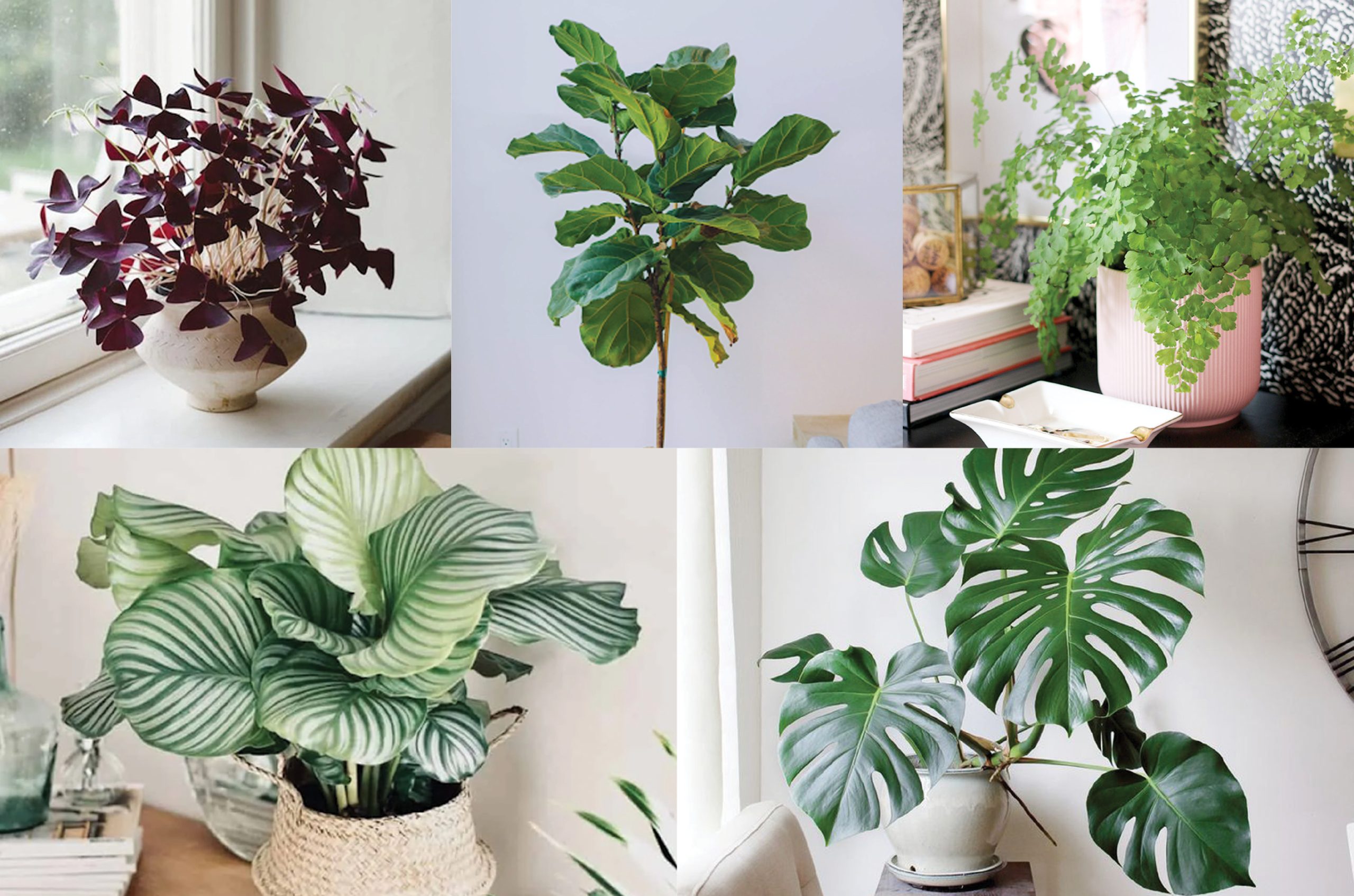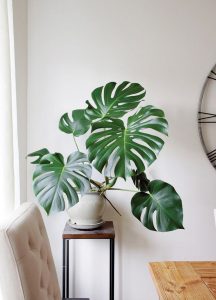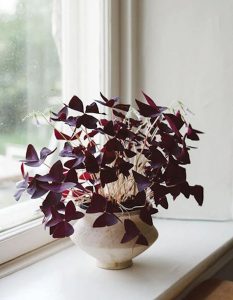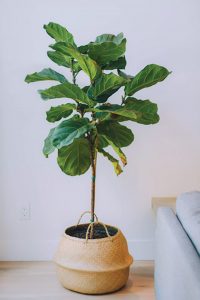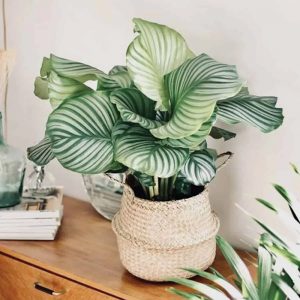Fall is a season of dazzling color, but it also means the end of the lush greens of spring and summer. As the air starts to chill, you don’t have to say goodbye to the gorgeous greenery in your life. Just bring the outdoors in with houseplants! Here are some options to bring a little natural beauty to your living spaces, even as the days get colder.
monstera deliciosa
Thanks to the distinct fenestrations (AKA holes) in the leaves, it’s sometimes referred to as the Swiss cheese plant. An easy-going option, it can bring some tropical flair to even the cripest of autumn days. Not suited for direct sunlight, the monstera thrives when placed in medium to intense indirect light. It should be watered every one to two weeks, allowing the soil to dry between waterings. The monstera does not handle freezing temperatures well, so make sure you keep it warm as temperatures drop outside.
oxalis triangularis
While not actually a clover, this houseplant is also known as the purple shamrock plant due to its distinct triangular leaves. Its beautiful color makes a striking addition to any home, and best of all, it’s easy to care for and thrives indoors all year. It should be placed in a sunny area and since it begins as a bulb, be careful not to overwater. Allow the top one or two inches of soil to dry before watering again. This will help avoid rot while also ensuring the plant does not go dormant.
maidenhair fern
Known for its delicate fan-shaped fronds, this plant takes up to three years to reach full maturity—luckily, it looks stunning throughout the stages of its growth. Since it thrives in humidity, the soil should be kept moist with daily watering. To mimic the warm humid air it grows in, mist the plant with warm water a couple times a day. Avoid placing your maidenhair fern in direct sunlight. Instead, try to find a location that allows for indirect light in the morning or afternoon.
fiddle leaf fig
If you want to bring drama to a room, the fiddle leaf fig is an easy way to do so. The plant needs a lot of unobstructed natural light, so they do best when placed directly in front of a window, especially when the days get shorter in fall and winter. The larger your plant is, the more sun it will require to thrive. They should be watered thoroughly about once a week. Make sure you dust your plant’s leaves. If dust accumulates, it can inhibit its ability to perform photosynthesis.
calathea orbifolia
This tropical beauty has oversized leaves with distinct silvery bands. It can make a bold statement in any home. Calathea require high humidity and constant soil moisture. Make sure you water the plant whenever the top inch or two of soil is almost dry. Regularly mist the plant or place it near a humidifier. Keep the calathea out of direct sunlight to avoid damage to the leaves. While it can thrive in lower light, make sure you keep it in an area where there is at least sufficient light to read by.
Photos: pinterest.com





